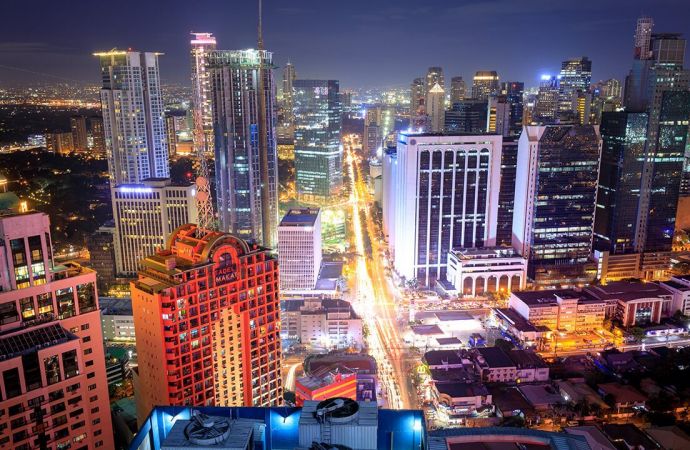No, say the people involved in four of the five ammonia/CO2 systems installed at U.S. supermarkets.

Tristam Coffin, Whole Foods Market
To date there are only four U.S. supermarkets – five by the end of the year – that have been willing to install a refrigeration system that uses ammonia, along with CO2. This makes an NH3/CO2 system one of the most unusual of natural refrigeration technologies (propane/CO2 is in only one Whole Foods Store), despite the efficiency and environmental advantages it offers.
The reason for this is twofold: fear and cost. The fear stems from ammonia’s toxic properties as well as the noxious odor it exudes; an ammonia leak is not something that most grocers would happily contemplate. As for cost, ammonia/CO2 systems typically run 150% higher than that of conventional DX supermarket systems, according to Keilly Witman, owner of KW Refrigerant Management Strategy, a Boise, Idaho-based consultancy and former manager of the Environmental Protection Agency’s GreenChill program.
But the fear factor may be overblown, said four panellists at a discussion of these systems at the International Institute of Ammonia Refrigeration (IIAR) Natural Refrigeration Conference and Expo, held March 4-6 in Phoenix. The discussion, hosted by Witman, included speakers who have worked with three of the four existing NH3/CO2 stores – operated by Whole Foods Market, Albertsons (formerly Supervalu) and the Defense Commissary Agency) – and one with a Raley’s store that will open later this year. (A Piggly Wiggly store operated by JTM Corp., which uses this system, was not represented.)
While the retailers who ventured into testing ammonia, had some trepidations about the refrigerant, they found their concerns were mostly dismissed by the local Authority with Jurisdiction (AHJ) or fire official.
“From a safety standpoint it was literally laughable to [the fire department] that we were concerned about having [300 lbs of] ammonia in a grocery store,” said Richard Heath, director of enterprise energy and sustainability, Insight Sourcing, who worked for Supervalu when it opened the first NH3/CO2 store (an Albertsons) in Carpinteria, Calif., in 2012.
The Carpinteria store, which was also the first all-natural refrigerant store in the U.S., uses ammonia on the roof on the high side with CO2 circulated in the store in a cascade configuration. It also employs a redundant R407A system to run energy-efficiency comparisons with the ammonia/CO2 system.
Heath acknowledged that Supervalu had been“overly concerned” because of the “horror stories” about ammonia, stemming from the time when it was replaced by synthetic refrigerants. “We truly thought we were going to have an uphill battle in California for permitting.”
Tristam Coffin, director of sustainability and facilities, Whole Food Market's Northern California region, had a similar experience when opening an ammonia/CO2 cascade store at a Dublin, Calif., location four years ago.
“The fire department laughed us off in terms of our concerns with the potential safety of the system,” Coffin explained. “They were fine for whatever we intended to do in large part because there was more serious precedent on the industrial side.”
Raley’s unorthodox system
Ed Estberg, a refrigeration consultant for Raley’s who served as senior director of facilities for the Californian chain from 1989 to 2009, has helped it developed its own unorthodox system that employs ammonia DX with liquid overfeed CO2 and no CO2 compressors. He expects the Sacramento store with the system to open in October.
“All the mechanical heating and cooling in our building is tied to our system,” said Estberg. “We have capacity for everything from ice cream to air conditioning.”
Raley’s was motivated to develop the all-natural refrigeration system because of the expectation that California’s Air Resources Board will cap the GWP of refrigerants in commercial systems at 150.
“When California first announced two years ago that we had to be under 150 GWP, I went to the [Raley’s] ownership and said, you really don't have a choice,” Estberg said. “You can go to a lower GWP and then in five years they're going to come at you again. So instead of being 150, it's going to be 99 and that is going to be a 50. I said, let'sjust go to zero and they agreed with that.”
California’s fire and mechanical codes are paving the way for ammonia in commercial applications. “It's very clear that they expect that to happen,” said Estberg. The chain, he added, “got no comments from the fire department.”
Estberg urged other supermarket operators in California to make up their minds about the type of refrigeration system they will use after the state enacts its new GWP rules. “I recommend you forget about the interim steps and go right to zero [GWP].” Even outside of California, other U.S. states are following California’s model in regulating HFCs. “Certainly within 10 years everybody in this room's going to be faced with it; I don't care where you in the United States,” he said.
The U.S. Defense Commissary Agency (DeCA) – the worldwide “supermarket to the military” – installed an ammonia/CO2 cascade system at its Lackland Air Force Base commissary in San Antonio, Texas, in 2014, replacing an aging R404A system. Given the store’s proximity to day care center, the church and shopping center, the installation has a keen focus on safety, separating the 81-lb ammonia charge on the roof into nine separate modules, such that a leak from any one module would pose a minimal hazard.
Nonetheless, the project met considerable resistance from the base, including a maintenance representative who “was almost pounding his fist on the table saying, not on my base,”said Rob Arthur, director of refrigeration engineering, CTA Architects Engineers, who worked on DeCA’s ammonia/CO2 project.
To allay their concerns, CTA did a “plume study” examining a worst-case scenario in which 100 lbs of ammonia would be released at once under the least favorable conditions, a cold foggy day. The study found that “by the time that amount of ammonia could reach anywhere whether there would be [people], there would only be an odor; there was no health hazard,” said Arthur.
Once the results were explained to the base personnel, coupled with the sustainable benefits of they system, “they really got on board,” he added.
Arthur thinks the fear factor regarding ammonia has been overcome. “You can do them without a risk to operators in the store or the shoppers,” he said. “I think there's space for these kinds of systems.”
With local authorities satisfied with the safety of the ammonia/CO2 systems, both Heath and Coffin have found that the insurance costs associated with the systems are no different than for other refrigerants.
The cost obstacle
While anxiety about ammonia appears to be an obstacle that can be overcome, the high cost of ammonia/CO2 systems remains a major deterrent to the implementation of these systems by food retailers, who operate in a very low-margin business.
Heath pointed out that the Carpinteria store was a “proof-of-concept” implementation in 2012, and that greater demand will be needed to create economies of scale and lower prices. Take LED lights, he said.“Some supermarkets put them into freezer cases, and luckily we had an end user that said build it and we will buy it. The volume is what makes LED lights now affordable for us.”
Coffin concurred. “I think economy of scale is the biggest piece that we need to recognize,” he said, adding that Whole Foods’ ammonia/CO2 installation carried a 102% premium over the baseline cost of an R407 DX system with adiabatic condensers.
Reflecting that the session on supermarket refrigeration – organized by the North American Sustainable Refrigeration Council – was taking place at an industrial refrigeration conference, Coffin suggested that there’s a “great opportunity” for commercial and industrial systems to be manufactured together to create favorable economies. “Obviously the systems and sizes are going to be very different but I think there are still some opportunities in that space.”
Raley’s is in a different situation because Estberg has designed the system, saving Raley’s a considerable amount of money. He said the cost is driven by the price of the liquid CO2 overfeed racks.
All told, he calculated that the cost of the ammonia/CO2 system would run 15% more than that of a standard system – or about $300,000 more than a $2 million system. In estimating the payback on that premium, he includes not only energy but also water and natural gas, which will be reduced by the use of heat reclaim for domestic hot water.
His “long-term analysis” is that Raley’s will save about $35,000 per year in utility costs, producing a payback over 8.6 years (which he rounded to 10 years).
Typically the supermarket industry looks for a three-year payback period. However, even a 10-year payback “isn't such a bad thing when you really start looking at total cost of ownership,” Coffin said. “Ideally your system will be operating for 15-20 years.”
In its initial ammonia/CO2 installation, Raley’s is receiving a rebate of $250,000 from the Sacramento Municipal Utility District (SMUD), of which $150,000 is from installing a natural refrigerant system, and $100,000 for improved energy efficiency. That would cover most of the premium, but only for the first store.
Some of the ammonia/CO2 systems in supermarkets have demonstrated energy-saving capabilities just via the refrigeration. At a Piggly Wiggly store in Columbus, Ga., operated by JTM Corp., Heatcraft Worldwide Refrigeration found that the ammonia rack consumed 22% less energy on average than an HFC rack in the same store during a four-month period.
At the Carpinteria store, Supervalu was able to compare the energy consumption of the ammonia/CO2 system and the redundant R407A system, and found the former 12%-16% more efficient than the latter, said Heath.
Other stores were not as successful on the energy side. Arthur said the DeCA ammonia/CO2 system achieved “energy parity” with a “finely tuned” 407A or 449A system. Whole Foods found that its ammonia/CO2 system performed less efficiently than other systems, including a transcritical CO2, propane/CO2 and R407A distributed.
Witman asked the panellists whether sustainable ammonia/CO2 refrigeration systems could be perceived as a “competitive advantage” that should be publicized.
Heath noted that neither the Carpinteria store nor Whole Foods’ multiple natural refrigerant stores are well known to the public for their environmentally progressive refrigeration systems. “I think you should toot your own horn,” he said. “If you're doing a great job with anything, that should be recognized.”
Coffin pointed out that the Project Drawdown study cited synthetic refrigerants as the number one climate impact. Replacing them with natural refrigerants is “a story that’s been tough to tell but one that I think we're all trying to achieve.”
From a safety standpoint it was literally laughable to [the fire department] that we were concerned about having [300 lbs of] ammonia in a grocery store.”
– Richard Heath, Insight Sourcing (formerly Supervalu)
Related stories




